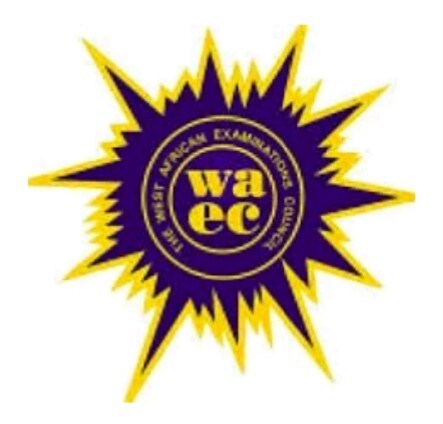Studying Jewellery is an essential part of exam preparation for students who will be sitting for the West African Examination Council (WAEC) examination.
List of Topics in WAEC Syllabus for Jewellery 2024/2025
The Jewellery syllabus provides a roadmap for students, outlining the topics they need to cover.
It also offers valuable insights and notes on key concepts that require attention during the learning process.
Why Study Jewellery?
Jewellery is a culturally significant vocation worldwide, and it holds great importance in societies.
Therefore, introducing and examining Jewellery at the Senior High School level in Ghana serves several purposes:
- Nurturing Creative Potential: Jewellery helps develop, promote, and sustain students’ creative potential.
- Promotion of Indigenous Forms: The subject encourages the exploration and preservation of indigenous forms of Jewellery.
- Availability of Materials: Jewellery offers the opportunity to work with both traditional and non-traditional materials, fostering innovation and experimentation.
- Inclusivity: Jewellery can be studied by students of all genders and taught in both urban and rural schools.
- Global Market Demand: There is a ready market for jewellery items worldwide, providing potential economic opportunities.
- Cultural Storehouse: Jewellery serves as a repository of cultural heritage, preserving traditions and values.
- Store of Value: Jewellery is considered a valuable asset, adding to its significance.
Aims and Objectives of the Jewellery Syllabus: The examination syllabus for Jewellery aims to achieve the following objectives:
- Assessing Knowledge and Skills: Test candidates’ theoretical and practical knowledge and skills in Jewellery.
- Designing and Production: Evaluate candidates’ abilities in designing and producing jewellery using traditional and non-traditional materials.
- Workshop Management: Assess candidates’ understanding of establishing and managing a jewellery workshop for personal and national development.
- History and Development: Test candidates’ knowledge of the history and development of Jewellery.
- Aesthetic Awareness: Evaluate candidates’ aesthetic appreciation and awareness of Jewellery.
Scheme of Examination
The Jewellery examination consists of three papers: Papers 1, 2, and 3. Candidates are required to take all three papers.
- Paper 1: This multiple-choice objective paper consists of 40 questions to be answered within 50 minutes, carrying 40 marks.
- Paper 2: Candidates must answer four essay-type questions out of six within 2 hours, accounting for 60 marks.
- Paper 3: This practical paper involves executing one out of two projects within five days, working six hours each day. The paper carries 80 marks.
The question papers will be provided to candidates two weeks before the execution period to allow for study and preparation.
Designing sketches and preparatory notes should also be completed during this period and carry 20 marks. The total mark for Paper 3 is 100.
Exploring the Jewellery Syllabus
The Jewellery syllabus covers a wide range of topics, providing a comprehensive understanding of the subject. Here is a simplified breakdown of the syllabus:
- Jewellery as a Vocation:
- Importance and Rationale for studying Jewellery
- Types and uses of Jewellery
- Ethical Considerations for Jewellers
- History and Symbolism of Jewellery:
- Origin and history of Jewellery worldwide and in Africa
- Contribution of Jewellery to social, economic, cultural, and political development in Ghana
- Foreign influences, symbolism, and relevance to Ghanaian society
- Symbolism in Ghanaian culture
- Materials, Tools, and Equipment:
- Types and categorization of tools, equipment, and materials
- Identification, sources, preparation, and uses of materials
- Storage, care, and maintenance of tools and equipment
- Basic/Advanced Design:
- Application of design elements and principles in Jewellery
- Perception, symbolism, and the role of senses in Jewellery
- Drawing and computer-aided design
- Design and Technology Process (DTP):
- Importance of DTP and problem-solving skills
- Processes involved in design and technology
- Project report writing
- Production, Decoration, and Finishing of Jewellery Items:
- Metal preparation, alloy calculations, and gemstone usage
- Making processes: organic and inorganic techniques
- Decoration and finishing techniques
- Packaging and Handling:
- Importance of packaging
- Types and qualities of effective packaging
- Materials, tools, and designing of packaging
- The Jewellery Workshop:
- Workshop organization, layout, and safety measures
- Setting up and managing a jewellery workshop
- Basic principles of management and bookkeeping
- Sustaining the Jewellery Industry:
- Strategies for sustainability, such as sound mining practices and recycling
- Challenges in the industry, including material acquisition and compliance with regulations
- Exhibition and Entrepreneurship:
- Building portfolios and the importance of exhibitions
- Costing, pricing, and managing business risks
FAQs
What topics are covered in the WAEC Jewellery syllabus for 2024/2025?
The WAEC Jewellery syllabus for 2024/2025 typically covers various topics related to jewellery design, production, and metalworking. These may include the history of jewellery, design principles, materials used in jewellery making (such as metals and gemstones), techniques in metalwork, stone setting, polishing, and finishing, as well as health and safety practices in jewellery production.
How can I access the WAEC Jewellery syllabus for 2024/2025?
The WAEC Jewellery syllabus for 2024/2025 can be accessed through the official WAEC website or from authorized educational centers and schools offering jewellery as a subject. You may also obtain it from your school or educational institution if they are participating in the examination.
What is the exam structure for WAEC Jewellery 2024/2025?
The WAEC Jewellery exam for 2024/2025 is likely to consist of both practical and theoretical components. The practical exam may involve creating jewellery pieces or working with specific materials, while the theoretical section will test knowledge of design principles, materials, techniques, and safety procedures in jewellery making. The exam is designed to assess both creative and technical skills.
Conclusion
The WAEC Jewellery syllabus provides a comprehensive framework for students preparing for the examination.
By following the syllabus, students can gain a deep understanding of Jewellery, its history, materials, design principles, production techniques, and entrepreneurship.
This knowledge equips them with skills that can contribute to personal and national development.
Therefore, students should begin their exam preparations by utilizing the Jewellery syllabus as their guide.






